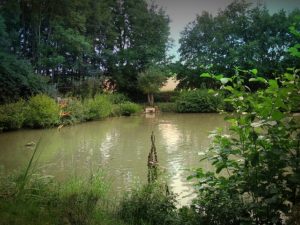Shrimp is a tasty and healthy food which is considered a high-quality commodity. If you want to, you could be able to raise shrimps easily at home in a home-based system that can be really profitable, with zero waste, and with minimum inputs. We will give you some simple tools you can use to get started in this if you so desire, we highly recommend it!
Shrimp farming is a very profitable business. In fact, it’s a multimillion dollar industry, and the best part is, you can get into shrimp farming at any scale, right from your home. What are you waiting for? But of course, if you think you want to be a professional shrimp farmer, you might consider buying some land and gather some capital, and start your own commercial shrimp farm because these things become more important when you want to produce on a larger scale.
A Home Based Shrimp Farm:
 If you’re planning to raise shrimp at home from juvenile shrimp, you can do it in many different ways. If you have a swimming pool that you don’t use anymore, a backyard pond or even large tubs, you can use them for shrimp farming how convenient don’t you think?. You won’t even need a large backyard to being in this great venture. Small tubs or containers can also host a large number of shrimp. It would depend on how many and what size your shrimp are, so make sure you are clear on the size of the shrimp and how big you want your project to be.
If you’re planning to raise shrimp at home from juvenile shrimp, you can do it in many different ways. If you have a swimming pool that you don’t use anymore, a backyard pond or even large tubs, you can use them for shrimp farming how convenient don’t you think?. You won’t even need a large backyard to being in this great venture. Small tubs or containers can also host a large number of shrimp. It would depend on how many and what size your shrimp are, so make sure you are clear on the size of the shrimp and how big you want your project to be.
So, consider learning more about the following:
- Designing your farm
- Choose the right Variety of shrimp suitable for your location
- Source of your juvenile shrimp.
- Get an estimate of your costs.
- Learn about feeding your shrimp
- Learn how to eliminate predators and pathogens
- Learn about pathogens and diseases
- Learn to maintain optimal water quality
- Learning to market your shrimp.
Even if you want to raise shrimp for your own consumption and want to start small, I’d encourage you on doing so, this way you can get a feel for what it is like. You don’t really have to start a shrimp farm on a large scale; you can always start small and expand as you learn more. We will discuss some of the points here briefly, but you’ll need to gather more information on shrimp farming before starting, especially if you want to be a commercial farmer.
Planning and Designing your Shrimp Farm:
Most shrimp farmers use ponds to raise shrimp. However, as discussed earlier, you can start your farm in your basement in tubs, containers, or in old swimming pools that you no longer use. Consider how much capital, time and resources you’re willing to use, and plan ahead before starting. Go over places in your home and see if you have any space that could potentially become a pond for your shrimp.
Sourcing your Juvenile Shrimp:
You should know what type of juvenile shrimp to get and where to get them, this is a fundamental part of having a solid start to your farm so be clear on what you are shooting for. Search for a hatchery in your area or maybe a local shrimp farm can help you with starter shrimps.
Water Quality:
Test your water for any toxins, dissolved chemicals or substances or pathogens. If you are considering indoor shrimp farming, your household supply water would probably be fine and, it would eliminate a lot of problems such as predators and pathogens. Make sure to follow on this step as the quality of your shrimp can depend heavily on this.
Add Aerators:
 Most shrimp ponds need aeration in order for the water to be oxygenated and to stay in top shape. The rule of thumb is every time you feed your shrimp, you’ll have to add oxygen. There are several methods for this. A rotating wheel is the most common method of aeration, but a water fountain is also a useful and attractive way of aeration. Find the one most convenient to you and go for it.
Most shrimp ponds need aeration in order for the water to be oxygenated and to stay in top shape. The rule of thumb is every time you feed your shrimp, you’ll have to add oxygen. There are several methods for this. A rotating wheel is the most common method of aeration, but a water fountain is also a useful and attractive way of aeration. Find the one most convenient to you and go for it.
Feeding your Shrimp:
Feed your shrimp twice a day. They can eat a variety of pelleted foods or commercial foods. However, if your pond is ecologically balanced, they can eat a number of things growing in the pond like algae, larvae, plankton, etc.
Harvesting & Marketing your Shrimp:
You need to know the right time and right method for harvesting. If you are producing enough shrimp to market them for profit, it could become a good source of income for you. You’ll find that good quality, organic farm raised shrimp is in high demand and sells for top dollars around the world. Try to set up a direct sell point around your farm, or home. Also marketing directly to nearby business, restaurants, or farmers’ markets would be profitable. You can also use online sources for marketing.
Conclusion:
 Shrimp is a delicious and highly nutritious food that anyone can raise at home. However, before you start, you need to gather as much knowledge as possible. You may also want to get hands on training and consult an expert in this matter.
Shrimp is a delicious and highly nutritious food that anyone can raise at home. However, before you start, you need to gather as much knowledge as possible. You may also want to get hands on training and consult an expert in this matter.
P.S: Join our EAT Community for hours of lesson and resources on Aquaculture.
Source: WorldWide Aquaculture





do you know Natural Shrimp inc
patent holder?
Thanks for your comment! It’s so exciting to read your article and to know more about shrimp farming. I made sure to follow it. for more information http://www.asagriaqua.com/
I am interested to start about shrimp farm as a family. But I don’t have experience it. I would like know more information about shrimp farm like how to maintain shrimp farm, water , feed food, giving oxygen, cost , technology , e.t.c. Do I need to get an degree or to go school for starting shrimp farm. Please send more information to my email khumifb@gmail.com
I like to start a small shrimp forming in My country
THANK YOU FOR ENCOURAGE US TO START A SHRIMP PROJECT WE HOPE TO HAVE YOUR COPERATION
REGARDS G C ALLAGHERRY
THANK YOU FOR ENCOURAGE US TO START A SHRIMP PROJECT WE HOPE TO HAVE YOUR COOPERATION
REGARDS G C ALLAGHERRY
This article looks impressive but would like to have further details regarding prawns farming as we are about to start our business for the same and we need assistance.
मुझे हरियाणा में झींगा व्यवसाय करना है I want to start prawn shrimp farming in India in fresh water
I would like to start a home shrimp farm. Do you have more info?
Thanks for your article.